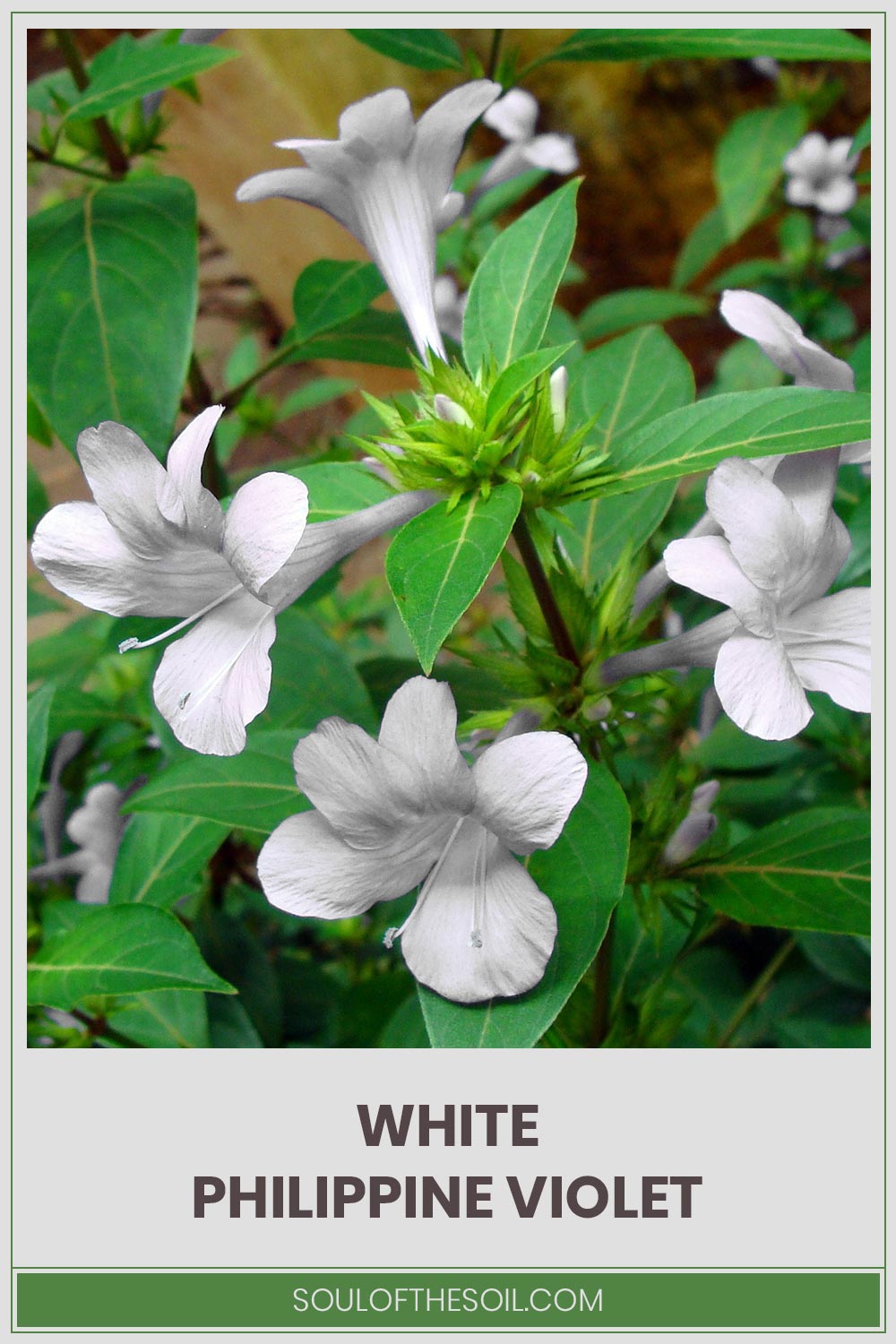White Philippine Violet
We may earn commissions for purchases made through links on our site. Learn more on our about us page.
The crested Philippine violet is a perennial herb that grows between 36 and 48 inches tall. The leaf tissue around the veins is puckered and seems depressed. The plant’s density holds up even in full sun, making it a great choice for a protective barrier.
Where do Philippine Violets Grow?
The flowers are purple and petite, like those of a violet. However, the plant does not belong to the violet family. Neither plant is indigenous to the Philippines.
Known by its scientific name, Barleria cristata, this tiny shrub is actually a broadleaf evergreen perennial that is native to a huge swath of land stretching from southern China to India and Myanmar. Its roots can survive the winter in USDA hardiness zones 9–11.

Can you Grow it Anywhere?
These plants are very simple to cultivate and yield an abundance of flowers that have a delicate fragrance. Philippine Violet Barleria will thrive and produce beautiful flowers, whether planted in the ground or in a container.
They are a lovely accessory that may be added to the garden or patio of any outdoor area. In regions with lower average temperatures, bringing a containerized plant indoors may be necessary for the winter months.
How Should You Take Care of it?
Barleria cristata should be planted in an area of your yard that gets full sun or some shade. These plants like sunny locations with well-drained soil and can survive dry periods. Each spring, cut the crested Philippine violet down to the ground to keep it bushy.
When you clean up this plant in the spring, you should wear gloves because the leaves get rough after freezing and could hurt your skin if you don’t.
When is the Best Time for Planting a Philippine Violet?
You shouldn’t plant it until late spring, as it is a cold-sensitive plant that needs a full growing season for its roots to form before winter. Sunlight in the morning is ideal, but it can also thrive in strong shade.
Is the Philippine Violet Invasive?
The fast-growing, perennial Philippine Violet is grown primarily for its attractive flowers. This plant has often made its way out of agriculture and into the wild, where it has established itself in places like disturbed areas, abandoned gardens, riverbanks, and roadside ditches.
It is on the invasive species list of Australia, Fiji, Hawaii, French Polynesia, Mauritius, Réunion, and Puerto Rico. It’s classified as a noxious weed in Australia.
Final Thoughts on White Philippine Violet
The Philippine violet is able to adapt to a wide variety of environments, including those that have been heavily modified by humans, abandoned areas, and xeric vegetation.
The dark green foliage has a medium texture and becomes rigid and “prickly” when the temperature drops below freezing. This shrub bears white or lavender flowers in late summer and early autumn.



Leave a Reply
You must be logged in to post a comment.